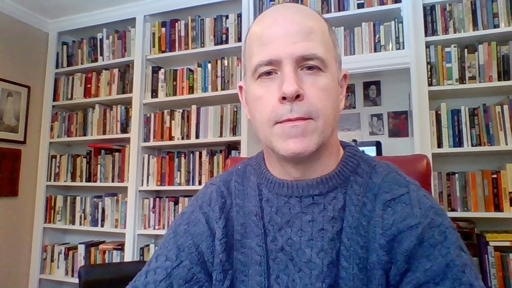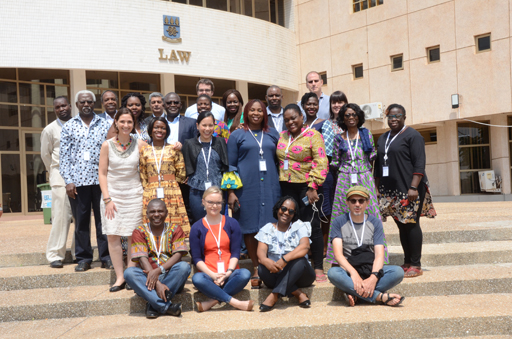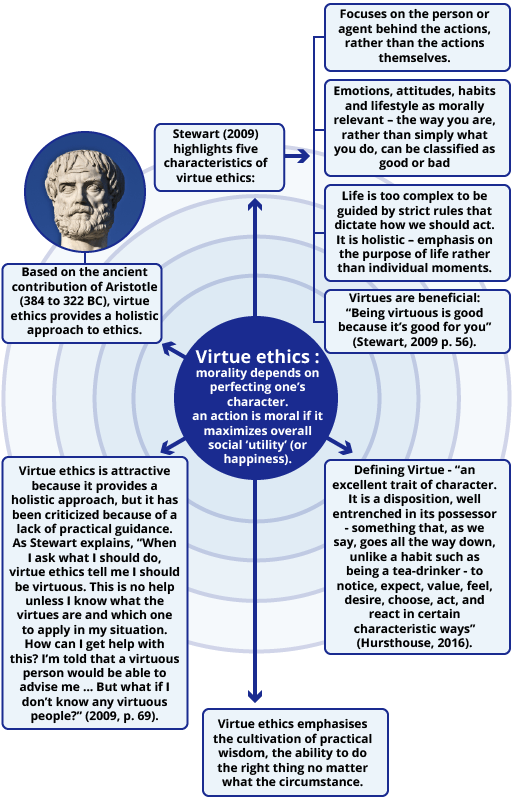Use 'Print preview' to check the number of pages and printer settings.
Print functionality varies between browsers.
Printable page generated Friday, 21 November 2025, 5:52 AM
Unit 5: Becoming self-aware
Unit 5: Becoming self-aware
In this unit you will explore how developing students’ self-awareness, or metacognition, can assist them in their learning. The following brief video provides a clear introduction to this topic.
Watch this video of James Lang talking about becoming self-aware

Transcript
5.1 Metacognition
We know that one key for effective learning is what researchers call metacognition, which refers to our ability to understand our own knowledge levels and learning abilities. The more self-aware students are about their learning, the more they can monitor and improve their learning in any subject.
So, as much as possible, you should seek out opportunities to invite students to identify what they understand or do not understand, or where they are strong and where they need improvement.
Cognitive psychologist Stephen L. Chew has created a series of videos for students on the importance of metacognition to their learning. The videos summarize the key research in this area in ways that are accessible to both teachers and students, and can be found here.
You can insert small opportunities for these kinds of conversations throughout many of the recommended activities. Several of the E4J Modules recommend having students engage in debates or role plays surrounding ethical issues. Activities like this can always be followed by the opportunity for students to debrief and reflect upon the experience. This can be done in the form of discussions or writing activities.
You can also consider pausing during role plays or simulations and giving students the opportunity to articulate their current state of understanding; once they have done so, you can then return them to the activity. Activities like role plays, simulations, and debates will be much more effective learning experiences if the students take the time to reflect upon the experience and to articulate explicitly what they learned from them.
Fluency illusions
Learning researchers tell us that most of us have “fluency illusions” in our understanding of any given topic. In other words, we tend to assume we know more than we actually do. These fluency illusions can de-motivate students (and their teachers) from learning something new, since we believe we have already mastered it.
5.2 Self-reflection and analysis
The best remedy for fluency illusions is to encourage self-reflection and analysis of one’s own knowledge. Most importantly, paying attention to the metacognition of your students helps you empower the students and motivate them for continued learning after the formal education has concluded. You will explore this further in the next activity.
Activity 5.2 Facilitating self-reflection and analysis 
Bringing your own teaching experience to mind, consider how you encourage your students to engage in self-reflection and analysis of their thinking. Use the box below to note down at least one example.
Answer
There are many opportunities for you to encourage self-reflection and analysis in the E4J Modules. For example, in E4J Ethics Module 7 (Strategies for Ethical Action), there are several occasions where students can be invited to towards self-reflection and analysis of their thinking. Exercise 3 of that Module, for example, concludes with the following directions:
After listening to your colleague’s proposed solution to the values conflict under discussion but before discussing it, take a moment to silently consider your responses to the following questions:
What is your immediate response to your colleague’s strategy and “script”?
What are the strengths of this response?
What questions do you still have for your colleague?
If you were the target of this response, how do you think you would react?
What might improve this response?
These kinds of questions invite precisely the sort of reflection that produces better metacognition and help provide the student with direction for her future learning.
Another very simple strategy that you could use in your courses takes the form of a writing exercise that students can complete at the end of any class period, no matter what the activity is. In this technique, usually called the “Minute Paper” (see E4J Ethics Module 9 or E4J Anti-Corruption Module 6 for examples), you pause the class a few minutes before the end and asks students to write down their responses to two questions: “What was the most important thing you learned today? What question remains in your mind?”
When students conclude a learning experience by reflecting upon these two questions, they are helping to seal in their minds the most fundamental knowledge or skill from the class. They are also taking stock of their learning to discover what prior assumptions have been challenged, what questions remain unanswered and where they still need help.
As an added bonus, you will find it useful to read what students have to say. They might all be confused about the same idea or they might have rated as “most important” an idea that you see as less critical. In either case, you can address this with the students in the next class period.
5.3 Virtue ethics
In this section you will explore two examples of how the E4J Modules provide teaching activities which seek to develop students’ self-reflection and analysis in relation to the teaching of virtue ethics. Virtue ethics is explained in detail in E4J Ethics Module 1 and is also discussed in relation to the definition of corruption in E4J Anti-Corruption Module 1 , but for clarity, an outline of virtue ethics is given in this video and a summary is provided in the infographic below.
The following two activities illustrate how the E4J materials seek to support students’ self-reflection and analysis in relation to understanding and applying principles of virtue ethics.
Activity 5.3 Role play: The power walk 
This activity is included in E4J Ethics Module 9 (Gender Dimension of Ethics).
This exercise can be used to encourage self-reflection amongst your students. Self-reflection is key to the cultivation of virtuous character traits.
To help your students understand the idea of privilege, and perhaps make them aware of their own privilege, you can ask the students to do the “privilege walk” shown in this short 4-minute video clip. (Here is the Singapore version of the clip.)
How might you avoid causing potential discomfort and embarrassment to your students when using this exercise?
Answer
One way of avoiding causing discomfort and embarrassment to your students, is to use the role-play method and assign fake identities to your students. This is the approach taken by the UN Women Training Centre in its Compendium of Good Practices in Training for Gender Equality (see p. 64). The resource calls refer to the exercise as the “Patriarchy and the Power Walk”.
Identities suggested by UN Women include: male lawyer with private firm, 10-year-old street boy, grandmother taking care of orphans, unemployed single mother, male storekeeper, woman police officer, blind elderly man, male school teacher, female member of parliament, migrant ethnic minority, male literate factory worker, etc.
The UN Women Training Centre provides the following guidance on running the exercise which you may find helpful:
Each student “steps into the shoes” of another person, e.g. a single mother, a blind man, etc.
Statements are read aloud. If these apply to them, they step forward. If not, they do not move.
In the end, participants visually see how much power, access to resources, and opportunities some individuals in society have compared to others.
Based on this, they discuss how power and privilege is relative to a person’s gender, socio-economic position, ethnicity, and other cross-cutting issues. This is followed by a discussion of the “Patriarchal Paradox”, i.e. how men are also disadvantaged by the system of patriarchy.
Statements suggested by UN Women for this exercise include:
I have access to and can read newspapers regularly
I eat at least two nutritious meals a day
I would get legal representation if I am arrested
I would be confident if I had to speak directly to a magistrate
I am not in danger of being sexually harassed or abused
I have a regular income or means of supporting myself
I can speak in meetings of my extended family
I would not be treated violently or roughly if I am arrested
I can afford and access appropriate healthcare
I can question spending of community funds
I can name some of the laws in the country
Someone would immediately be told if I was arrested
I have left over money at the end of the week that I can spend on myself
I can travel anywhere I like without assistance or permission
I do not feel threatened in the workplace by any issues of my identity
I do not feel socially uncomfortable in most situations to voice my opinions
I can do what I like in my home without fear
Other sample statements for this exercise are widely available and we provide two examples below:
If you would like to read more about the subject, open this article on Virtue ethics by philosopher Charles Freeland.
5.4 Practical wisdom
The following activity is included in E4J Ethics Module 10 (Media Integrity and Ethics). It can be used to highlight the concept of practical wisdom, which is key to the virtue ethics approach to morality.
Activity 5.4 The rise of fake news 
Ask your students to watch a short documentary that shows fake news 'factories' in FYR of Macedonia (now North Macedonia).
How could you use this video to engage your students in discussing how to discern between fake news and authentic journalism?
Answer
There are a number of ways in which you could approach this, depending on your particular context.
One approach could be to generate short discussion of the documentary with the whole class. Then you could ask students to work in pairs to find an authentic news story and also create a fake news story on a similar theme. Depending on the time available and the size of your class, select a number of pairs to present their authentic and fake stories. The rest of the students must distinguish the true from the fake news and facilitate a discussion around that.
If you have sufficient time, a good way to finish this activity is to screen the TED Talk: Think like a Journalist.
This TED Talk has a funny personal beginning that relates well to the main theme of ethical, trustworthy journalism and argues that re-sending social media news content makes all of us instant reporters. This is an excellent transition from the big picture of media ethics to the media ethics of the individual and can help students think about practical wisdom – how a virtuous person would respond to fake news.
As a news reporter for the Plano Star Journal newspaper, Kelsey Samuels delivers a talk on fake news, disinformation, dangers of silo social media and the role of the media as well as the role of the consumer of media in our Internet age. She uses her personal experiences from high school, as a university student, and later as a young journalist, which will help the issues seem relevant to your students.
5.5 Conclusion

During unit 5 you have explored the importance of developing self-awareness in your students. You have been introduced to some of the practical methods for achieving this by exploring virtue ethics; one of the key ethical theories introduced in the E4J Integrity and Ethics Modules.
In the next unit you will consider how effective ethics education requires going beyond the mere teaching of ethics topics and requires a supportive ethical learning environment.
